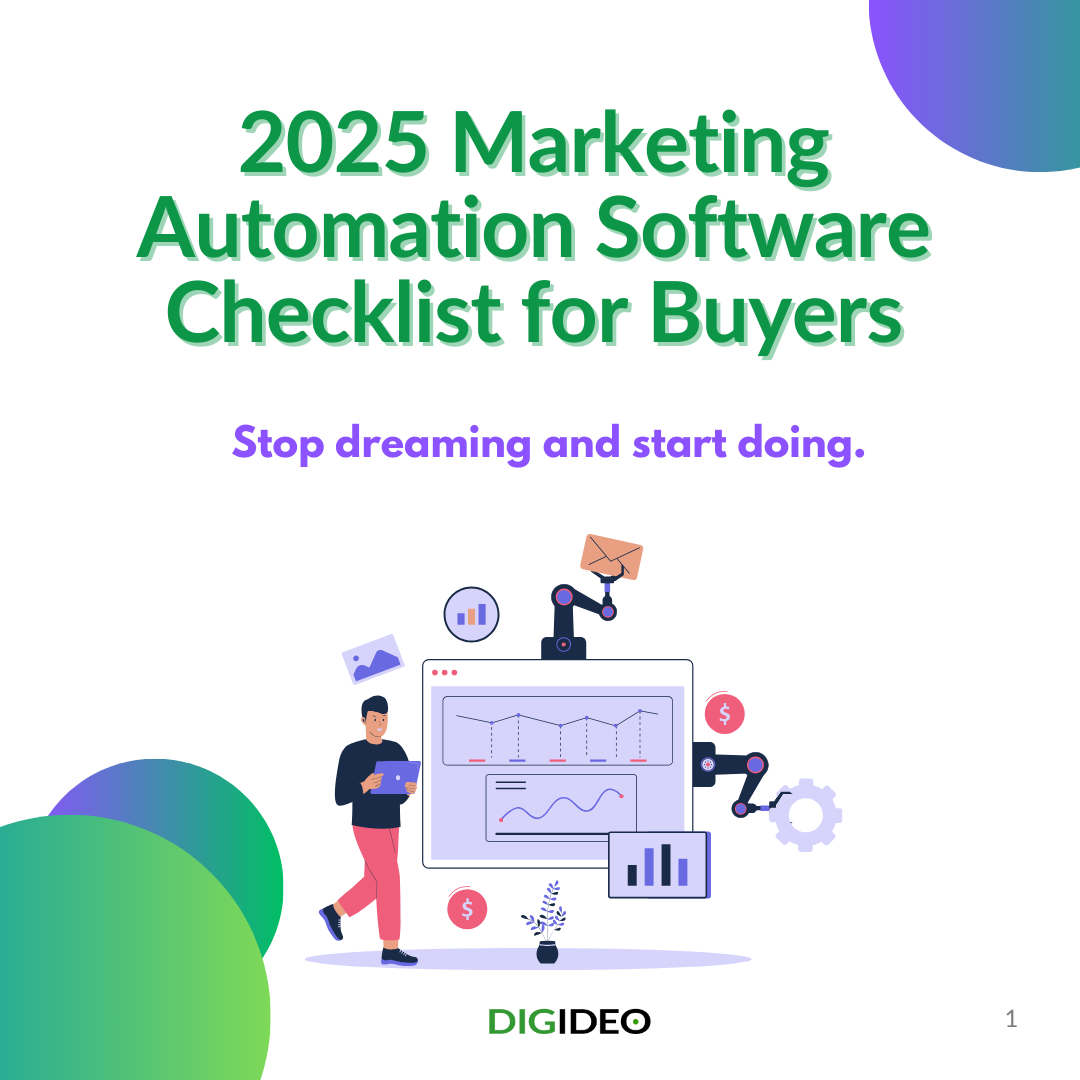Marketing automation is an exemplary process for already established and profitable companies.
However, you can start using it just right when you set up your own business in social media, ecommerce, or online professional services.
You should know your processes well before automating them or constantly checking and updating them to meet your current needs.
I suggest starting with an essential marketing automation for most businesses.
Please use the built-in email marketing features for transactional emails and newsletter subscribers, and integrate Mailchimp, Zoho CRM, Klaviyo, or any other CRM with marketing automation tools. Next, you can check your funnels and add levers.
After a few months, when you collect your leads and customers, you can examine your processes to automate them. But this is not an answer to all your pain points.
The Purpose of Marketing Automation
With marketing automation, you can streamline your online marketing efforts, like capturing leads, sending new offers and discounts, automating routine processes, acquiring real-time analytics, optimizing your outreach engagement, and gathering actionable intelligence.
This enables you to scale up your sales and marketing efforts more effectively and efficiently.
Streamlined marketing efforts include:
- market segmentation,
- upselling and cross-selling,
- customer lifecycle marketing,
- customer retention,
- lead management, and
- Marketing ROI measurement.
Lead management includes lead generation, lead scoring, and lead nurturing.
These are marketing opportunities that can be lost or frustrated:
- Inability to scale up to meet the increasing demand
- Failure to find new leads (potential customers) due to limited marketing scope
- Inability to convert potential leads into buying customers
- Failure to get customer feedback to improve the marketing effort
- Inadequate and untimely response to customers’ needs due to a limited scope
- Failure to carry out in-depth market analysis to gain a deeper insight into what the market wants
- The expensive cost of marketing labor, Inability to diversify marketing channels
- Failure to carry out repetitive marketing tasks in an efficient and effective manner
Source: Marketing Automation and Online Marketing by George Pain
First, you need to start with your basic Marketing Automation Strategy
The following are simple steps that help build a basic marketing automation strategy and advance it further as you gain more insight and experience:
Step 1: Set and prioritize your goals
Example Goals:
- I want to generate more leads by increasing traffic to my website
- I want to run multi-channel campaigns that are consistent and
- I want to be able to integrate marketing automation with all of my current technology vendors
- I want to sell more my products to my existing customers
Step 2: Map out your customer journey
Your customer journey map is a visual presentation of the process a customer or prospect goes through to achieve a goal with your company. With the help of a customer journey map, you can get a sense of your customers’ motivations – their needs and pain points. Most customer journey maps start as Excel sheets that outline key events, customer motivations, and areas of friction within the user’s experience. Then, this information is combined into a comprehensive vision that describes an average experience with your business.
- Set clear objectives for the map.
- Profile your personas and define their goals.
- Highlight your target customer personas.
- List out all the touchpoints.
- Identify the elements you want your map to show.
- Determine the resources you have and the ones you’ll need.
- Take the customer journey yourself.
- Make the necessary changes.
Source: Hubspot Blog
Step 3: Identify, demarcate and define your customer segments
It is essential to know your customers. You can segment them by sales volume or web visits or by industry, etc. You choose your segments.
Step 4: Critically assess your content
No content can be deemed fit for all. We all have different tastes and preferences. We are attracted to different flavors.
There are those that desire content that is factual to the point. On the other hand, some people desire a substance that triggers emotions. Yet, there are those in-between.
Tune your content to suit specific customer segments that you have identified.
Use marketing automation tools to identify customer behavior to recognize which segment they belong to and unleash appropriate content delivery.
More importantly, critically assess your content in terms of validity, reliability, and effectiveness in terms of meeting customer’s informational needs, satisfying pain points, and achieving your overall marketing goals.
Step 5: Customize your message content creation and delivery to specific segments.
When you have a marketing automation strategy, now you can go to the next step – the Marketing Automation Checklist.
According to eMarketer, 86% of marketers said that marketing automation improved nurturing, 73% said that it gave them measurable results, and 66% said that it enhanced targeting and personalization.
The marketing automation landscape has changed significantly in the last few years. Today’s tools are more innovative, integrated, and focused on delivering a seamless customer experience across all touchpoints.
Here’s an updated checklist of key factors to consider when evaluating marketing automation platforms.
YOUR MARKETING AUTOMATION CHECKLIST
Use this checklist to ensure your marketing automation solution has all the capabilities you need for your current and future programs.
Usability
When it comes to making your team more productive, a marketing automation solution must allow you to handle the following:
-
Integration with your CRM or being a part of the CRM
- Enable your marketing automation and CRM system to sync in real-time so that your data is always up-to-date, allowing you and your sales team to act quickly and
- Unified customer profiles across touchpoints
- Triggers based on behavioral, demographic, and transactional data
-
Email batch and trigger:
Send large quantities of email; track and report on deliveries, opens, and clicks; automatically send triggered email responses based on the recipient’s actions or behavior; and track clicks on specific links within
-
Email deliverability:
Ensure your messages are being delivered and find fixes for low deliverability
-
Landing pages:
Build landing pages without the help of IT and direct traffic to customized, personalized landing pages
-
WebForms:
Place web forms on landing pages, microsites, or your website, and progressively collect information from visitors with each subsequent site
-
Mobile:
Optimize emails for mobile phones and tablets, and monitor, test, and react to how your customers interact with your mobile phone.
-
A/B Testing:
Experiment with subject lines, copy, graphics, calls-to-action, frequency, etc., to see which emails perform best. Based on segmentation, test content on landing pages, social ads, display ads, and more.
-
Templates/libraries:
Take advantage of templates and pre-built programs for email, landing pages, webinars, trade shows, lead scoring, and lead nurturing
SEO:
-
- Analyze keyword rankings for you and your competitors.
- generate lists of new keywords;
- Gain recommendations on web and landing page optimizations;
- Identify inbound links
- Cloning: Quickly replicate successful campaigns with minimal effort
Personalized multi-channel campaigns:
Create a consistent, personalized, 1:1 conversation with your audience on all channels, including mobile, social, email, and eCommerce platforms.
-
- Multi-channel campaigns: Track cross-channel behaviors to send personalized nurture emails and coordinate marketing across channels
- Real-time personalization: Personalize emails, landing pages, and website content for different site visitors based on their behaviors and attributes; personalize content in your content management system; and use tokens to auto-populate messages with program-specific information (such as names and dates).
- Advertising integrations: Seamlessly incorporate personalized digital ads into your outreach and nurture emails
-
Calendars:
Please view all of your events and campaigns in a color-coded, centralized team calendar and easily compare them to
-
Social:
- Segment and score based on social media activity. Increase engagement with social programs such as referrals, sweepstakes, and social share buttons.
- Email, SMS, WhatsApp, push notifications, and social media support
- Unified dashboard for managing cross-channel campaigns
-
Lead/customer lifecycle management with AI:
Quickly and effectively engage, track, nurture, and manage all leads at each stage of the Campaign/Deployment.
-
- Segmentation: Segment your database by demographics, simple behaviors (e.g., click on a link in an email), and cross-channel behaviors (e.g., shared content on Facebook).
- Nurturing: Set up and deliver a series of content offers; understand how leads engage with your content so you can respond accordingly; easily add new content to campaigns;
- Lead scoring: Use multiple scores for multiple products; score website visits and form-fills based on relevance; score based on complex behaviors; and separate interest from the fit. Add scores for positive engagements, such as visiting your pricing page, and subtract scores for hostile engagements, such as inactivity or visiting your career pages.
- Sales insight: Filter and present sales with the most useful, relevant prospect data; trigger sales alerts based on lead activity and even prioritize alerts based on content downloaded or other actions taken; and prioritize leads by who is most likely to Allow sales to send and track marketing-approved email templates and add prospects to nurture campaigns.
Data Privacy & Compliance
- Built-in GDPR, CCPA, and cookie consent management
- Tools for preference centers and consent tracking
User Management & Collaboration
- Role-based permissions and approval workflows
- Change tracking and audit logs
Pricing & Scalability
- Transparent pricing: per contact, usage, or feature tier
- Predictable upgrade paths with no hidden costs
Analytics
One of marketing’s most important functions is linking revenue with the campaigns responsible for generating that revenue. Ideally, your marketing automation solution will help you do just that by supporting:
- Program ROI: Analyze your channels and programs based on successes, content offers, new names, pipeline, revenue, opportunities, etc. Identify your top-performing programs to run again and your poor-performing programs to
- Multi-touch reporting: Go beyond seeing the first or last marketing touch influencing a deal and credit every campaign contributing to a closed deal.
Support & Resources
- 24/7 support options, onboarding, and help center access
- Certification programs and active user communities
Send download link to:
Marketing Automation Checklist for Buyers 2025
Your essential guide to choosing the right marketing automation platform for your business.
Struggling to pick the perfect marketing automation software?
This 2025 checklist breaks down the must-have features, integrations, and compliance tools you need to make a confident buying decision.
COMPARE YOUR OPTIONS
Now that you know which features to seek out, take the time to evaluate more than one solution.
Even a single side-by-side comparison can give you real context into which functionalities you truly want and need.
Write down some specific tasks that you need your marketing automation solution to be capable of:
- ………………………………….
- ………………………………….
- …………………………………
If you need our help, please feel free to contact us.




Share this entry